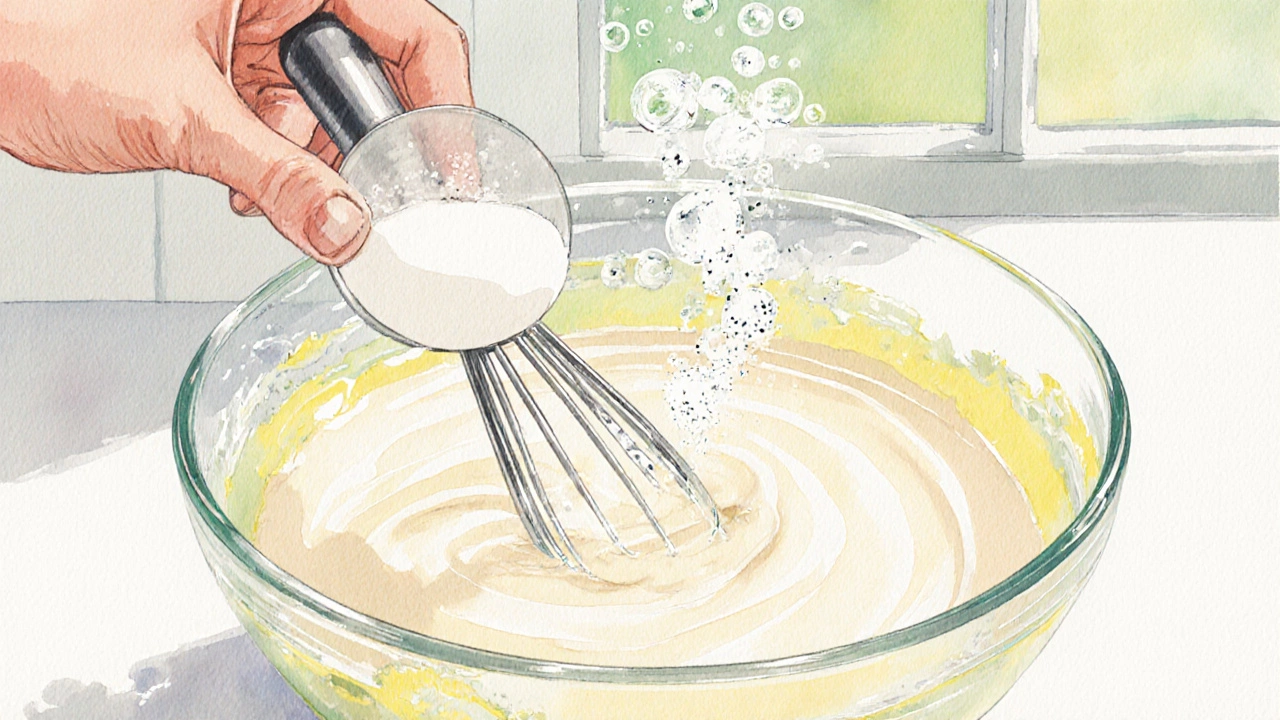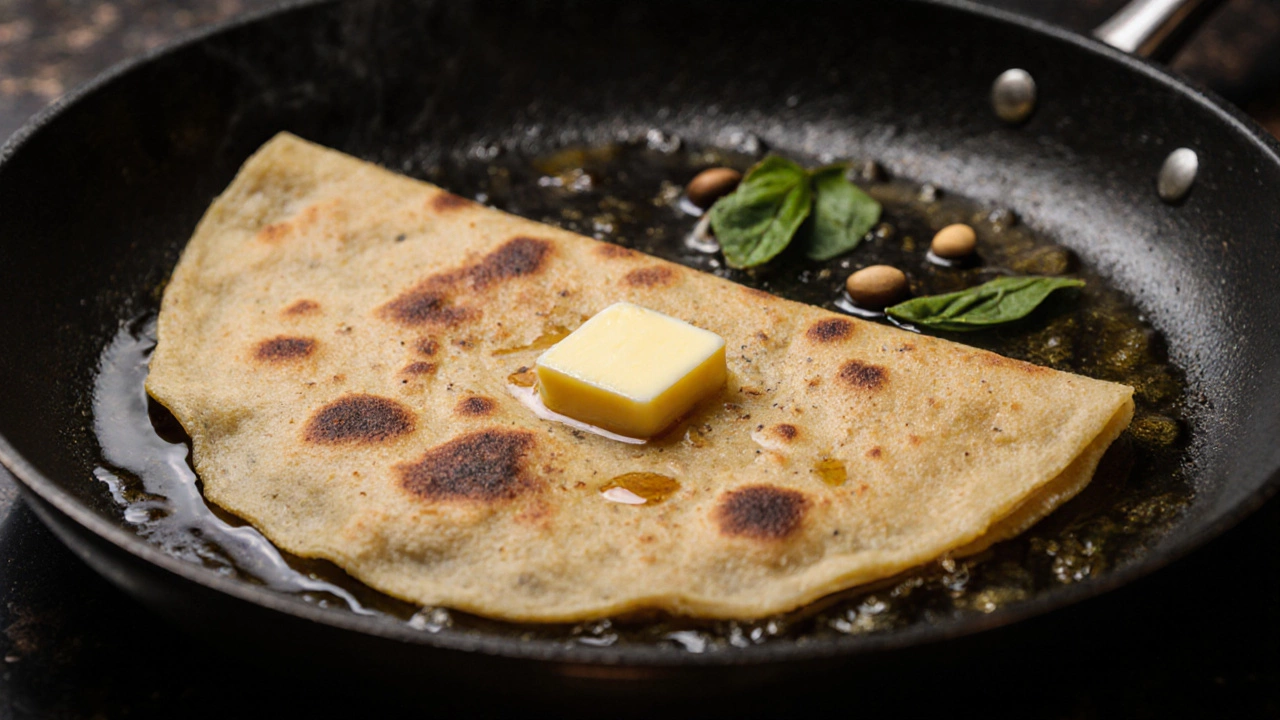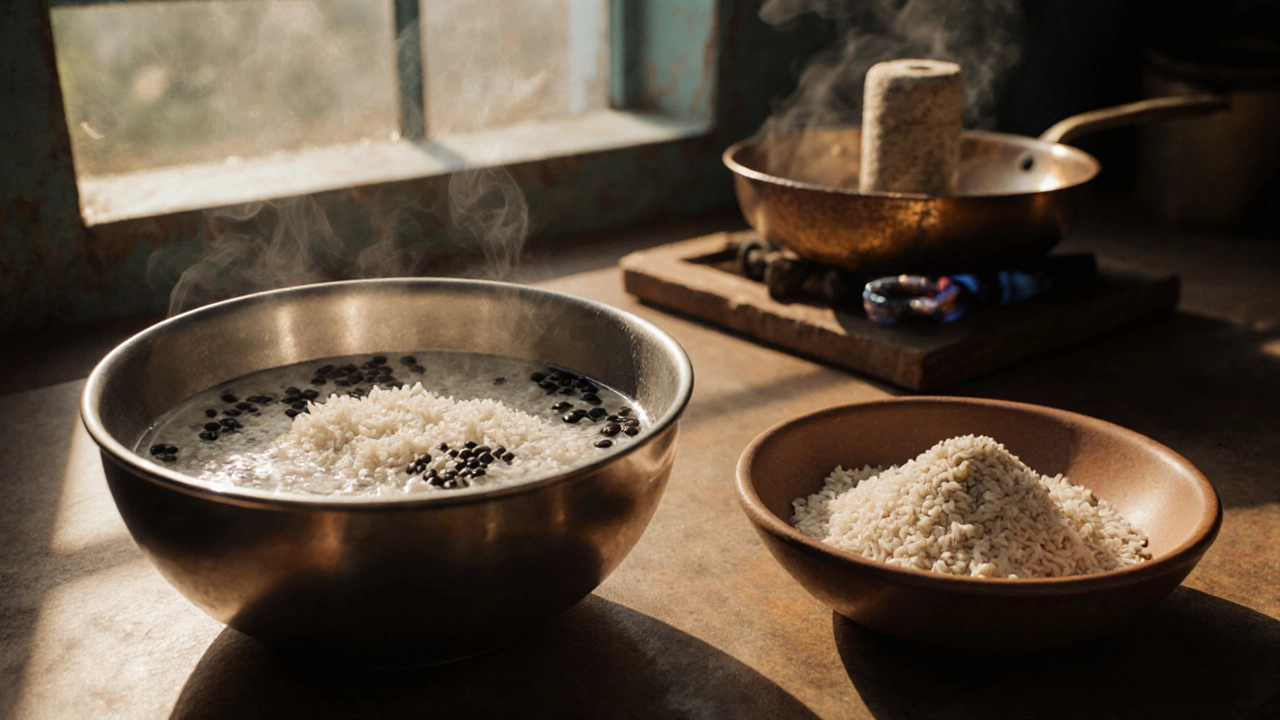Dosa Method Comparison Tool
Choose Your Priority
Select what matters most to you when making dosa without fermentation
Acid + Baking Soda
15-20 minsMix soaked rice-dal with yogurt/lemon juice and baking soda for immediate rise.
Baking Powder Only
5-10 minsUse rice flour and urad dal flour with baking powder for instant batter.
Sourdough Starter
2-3 hrsUse existing sourdough starter with rice/urad dal water for natural fermentation.
Your Best Match
Recommended Method:
Select your priority first
Why it works:
Select your priority to see why this method works best for you.
Pro Tip
Adjust batter thickness by adding water drop-by-drop. Let it rest for 5 minutes to let leavening activate, and use a hot non-stick pan with minimal oil for crisp dosa.
Ever wondered if you can skip the lengthy fermentation step and still get that classic, crisp dosa? Dosa batter is a fermented blend of rice and urad dal that turns into thin, golden pancakes on a hot pan. While traditional recipes call for 8‑12 hours of natural fermentation, busy mornings or cooler climates can make that wait feel impossible. This guide breaks down why fermentation matters, which shortcuts actually work, and how to tweak the batter for the best texture without waiting overnight.
Why Fermentation Is the Secret Sauce
Fermentation isn’t just a fancy word; it’s a biochemical dance that changes the batter’s flavor, aroma, and airiness. During the process, natural lactic‑acid bacteria and wild yeasts break down starches, producing:
- Carbon dioxide that creates tiny bubbles, giving dosa its signature puff.
- Lactic acid that adds a subtle tang and helps preserve the batter.
- Enzymes that improve digestibility by pre‑breaking proteins.
When you skip this step, you miss out on those benefits, but you can simulate some of them with a few kitchen tricks.
Core Ingredients You’ll Need
Regardless of the method, the foundation stays the same. Below are the essential components, each marked up the first time they appear:
- Rice is the primary carbohydrate source in dosa batter, usually a short‑grain or parboiled variety.
- Urad dal is split black gram that contributes protein and helps create a fluffy texture.
- Water (filtered or boiled, cooled).
- Salt, to taste.
If you’re going the non‑fermented route, you’ll also need one of the following leavening agents:
- Baking soda is a chemical leavener that releases carbon dioxide when combined with an acid.
- Baking powder is a blend of baking soda, cream of tartar, and a moisture absorber, providing a built‑in acid.
- Yogurt is a cultured dairy product that adds mild acidity and moisture (use a plant‑based alternative if you’re vegan).
- Sourdough starter is a living culture of wild yeasts and bacteria that can replace traditional fermentation, though it requires its own feeding schedule.
Three Proven Ways to Skip Traditional Fermentation
- Acid‑plus‑baking‑soda method
Mix the soaked rice‑dal slurry with a pinch of baking soda and an acid source (yogurt or a splash of lemon juice). The immediate chemical reaction creates bubbles, mimicking the lift you’d get from natural fermentation.
Steps:
- Soak 2 cups of rice and ½ cup of urad dal for 4‑5 hours.
- Grind to a smooth batter, adding water to reach a pourable consistency.
- Stir in ¼ cup plain yogurt, ½ tsp baking soda, and salt.
- Let the mixture rest for 10‑15 minutes - you’ll see tiny foam forming.
- Cook as usual.
- Instant batter with baking powder
Skip soaking altogether and rely on baking powder’s double‑acting formula. This gives a quick, consistent rise but lacks the sour note of fermentation.
Steps:
- Blend 1 cup rice flour, ¼ cup urad dal flour, 1 tsp baking powder, and salt with enough water to form a thin batter.
- Let it sit for 5 minutes - the leavening will activate.
- Cook immediately.
- Sourdough starter shortcut
If you already keep a sourdough starter, you can feed it with rice water and a splash of urad dal water. After a short 2‑hour fermentation at room temperature, the starter imparts the desired tang and lift.
Steps:
- Mix 100 g active sourdough starter with 150 ml rice water (water used to rinse soaked rice) and 50 ml urad dal water.
- Add 1 cup rice flour and ¼ cup urad dal flour, stir until smooth.
- Cover and let sit for 2 hours.
- Proceed to pan‑cook.

What Changes in Texture and Flavor?
Below is a side‑by‑side look at how each shortcut stacks up against the classic 12‑hour fermented batter.
| Metric | Traditional Fermented | Acid + Baking Soda | Baking Powder Only | Sourdough Starter |
|---|---|---|---|---|
| Fermentation Time | 8‑12 hrs | 15‑20 mins | 5‑10 mins | 2‑3 hrs |
| Flavor Profile | Slightly tangy, complex | Mild tang from yogurt/lemon | Neutral, slightly wheaty | Rich sourdough depth |
| Texture | Very light, airy | Fluffy but a bit denser | Thin, crisp | Air‑filled, similar to fermented |
| Digestibility | High (pre‑digested starches) | Moderate | Standard | High (sourdough enzymes) |
| Ease of Use | Requires planning | Simple, needs acid source | Very simple | Requires starter maintenance |
Tips to Perfect Your Instant Dosa
- Adjust batter thickness. A too‑thick batter won’t spread; add water drop‑by‑drop while stirring.
- Let the batter rest briefly. Even a 5‑minute pause lets the leavening settle and prevents large bubbles that can cause tearing.
- Pre‑heat the pan properly. A medium‑hot non‑stick skillet with a thin coat of oil gives the best crisp.
- Use a ladle for consistency. Pour in a steady circular motion; the batter should sizzle within seconds.
- Season after cooking. Sprinkle a pinch of mustard seeds or curry leaves on the hot oil before spreading batter for extra aroma.

When to Stick With Traditional Fermentation
If you’re aiming for authentic South Indian breakfasts, serving dosa at a brunch gathering, or want the maximum probiotic boost, the classic method still wins. It also works best in cooler climates where chemical leaveners may act slower. In those cases, planning ahead (soaking the night before) is the safest bet.
Key Takeaways
- You can produce tasty dosa in under 30 minutes using acid + baking soda, baking powder, or a sourdough starter.
- Each shortcut sacrifices a bit of tang or probiotic benefit, but flavor remains satisfying.
- Proper batter consistency, brief resting, and a hot pan are critical for crispness.
- Traditional fermentation is still worth the wait for maximum texture, flavor, and digestibility.
Can I add baking soda directly to a raw rice‑dal batter?
Yes, but you should first blend the soaked rice and urad dal, then stir in a pinch of baking soda and an acid (yogurt or lemon juice). The acid activates the soda, creating bubbles that mimic fermentation.
Will a non‑fermented batter keep as long as a fermented one?
Not really. Fermentation naturally preserves the batter for up to 3‑4 days in the fridge. An instant batter without acid will last only 1‑2 days and may develop off‑flavors faster.
Can I use cauliflower rice instead of regular rice for a quick batter?
Cauliflower rice can work for low‑carb versions, but it lacks the starch needed for a proper spread. Blend it with a little rice flour or add extra baking powder to help the batter bind and puff.
Is using a sourdough starter gluten‑free?
Only if you feed the starter with gluten‑free flours like rice or sorghum. A wheat‑based starter will introduce gluten into the dosa.
Do I need to add oil to the batter before cooking?
No, the batter itself stays oil‑free. Add a thin layer of oil to the pan right before pouring the batter; this ensures a non‑stick surface and a crisp edge.
